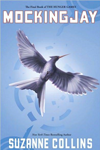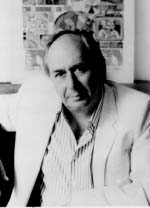
Search
Categories
Famous Authors
Top Selling Books

Book Home
![]() Books Information
Books Information![]() Atrocity Exhibition
Atrocity Exhibition
Atrocity Exhibition

The Atrocity Exhibition is British writer J. G. Ballard's most experimental novel. Originally published in 1970 by Jonathan Cape, a revised large format paperback edition, with annotations by the author and illustrations by Phoebe Gloeckner, was issued by RE/Search in 1984 (ISBN 0940642182).
The story is deliberately confusing, split up into fragments, almost (but not quite), in the style of William Burroughs' writing, of which Ballard is a long-time admirer. Each chapter is split up into smaller chapters, only a paragraph long, almost making them small individual stories with a central theme, what Ballard himself has called "condensed novels". There is no clear beginning or end to the book, as it does not follow any of the conventional and well-established rules of The Novel; the protagonist (if you can call him that) changes name with each chapter (Talbert, Traven, Travis, Talbot, etc, etc...), just as his role and his visions of the world around him seems to change constantly.
The theme of the story describes how the media-landscape inadvertently invades and splinters the private mind of the individual. Suffering from a mental breakdown, the protagonist - ironically, a doctor at a mental hospital - surrenders to a world of psychosis, in which he tries to make sense of the many public events that dominates his world: Marilyn Monroe's suicide, the Space Race, and especially the Kennedy Assassination, by restaging them in ways that, to his psychotic mind, gives them a more personal meaning, allowing him to relate to them. It is never quite clear how much of the novel really takes place, and how much only occurs inside the protagonists own head. Characters that he kills return again in later chapters (his wife seems to die several times). He travels with a Marilyn Monroe scorched by radiation burns and a bomber-pilot of whom he notes that "the planes of his face did not seem to intersect correctly."
Inner and outer landscapes seems to merge together (a Ballardian specialty), as the ultimate goal of the protagonist is to start World War III, "though not in any conventional sense" - a war that will be fought entirely within his own mind. Bodies and landscapes are constantly confused ("Dr. Nathan found himself looking at what seemed a dune top, but was in fact an immensely magnified portion of the skin area over the Iliac-crest", "he found himself walking between the corroding breasts of the film-actress", and "these cliff-towers revealed the first spinal landscapes"). At other times the protagonist seems to see the entire world, and life around him, as nothing more than a vast geometrical equation, such as when he observes a woman pacing around the apartment he has rented: "This ... woman was a modulus ... by multiplying her into the space/time of the apartment, he could obtain a valid unit for his own existence.";
As should be obvious, it makes little sense to try and read this book as a conventional novel, but nor was it intended as such.
Various pieces of the book were initially released independently, before being collected into a single novel. With chapter titles such as "Plans for the Assassination of Jacqueline Kennedy," "Love and Napalm," "Export USA," and "Why I Want to Fuck Ronald Reagan," and by constantly associating the Kennedy Assassination with a sexual event, the novel was met with some controversy, especially in America, where it was considered a slur on the dead president's image. Ballard himself claimed that "it was an attempt for me to make sense of that tragic event."